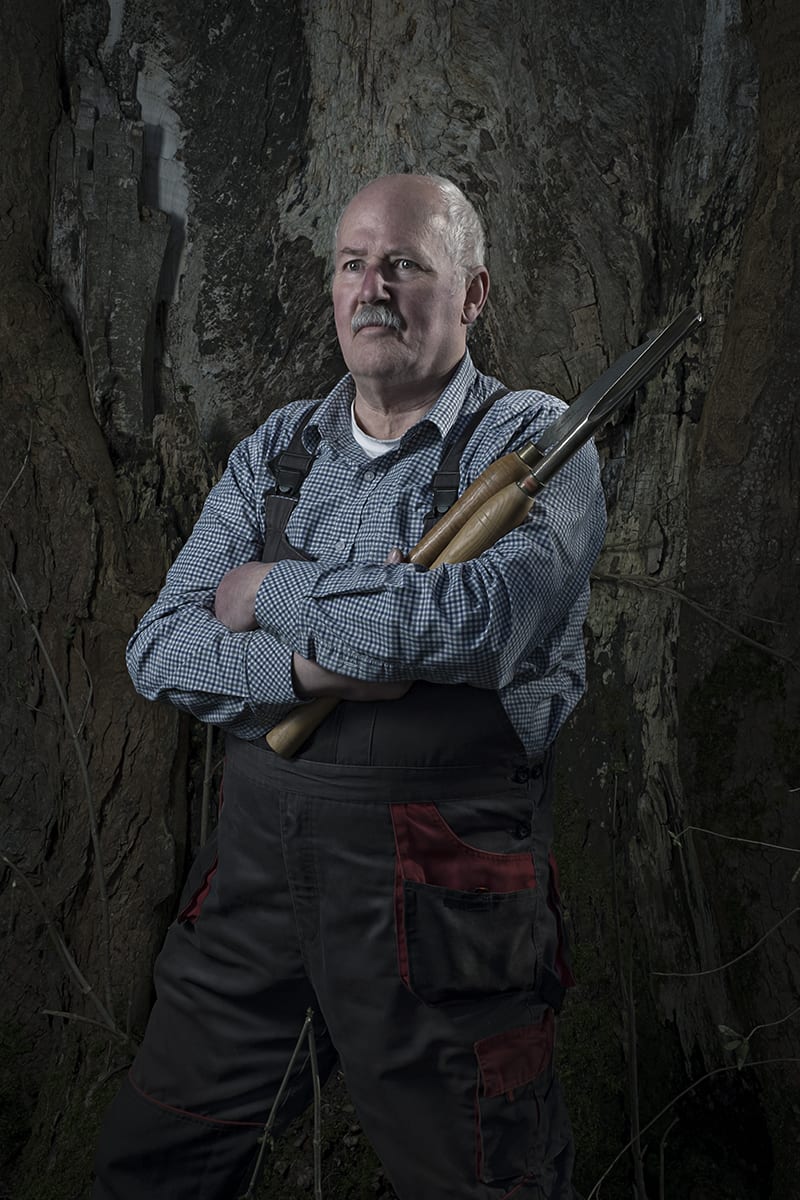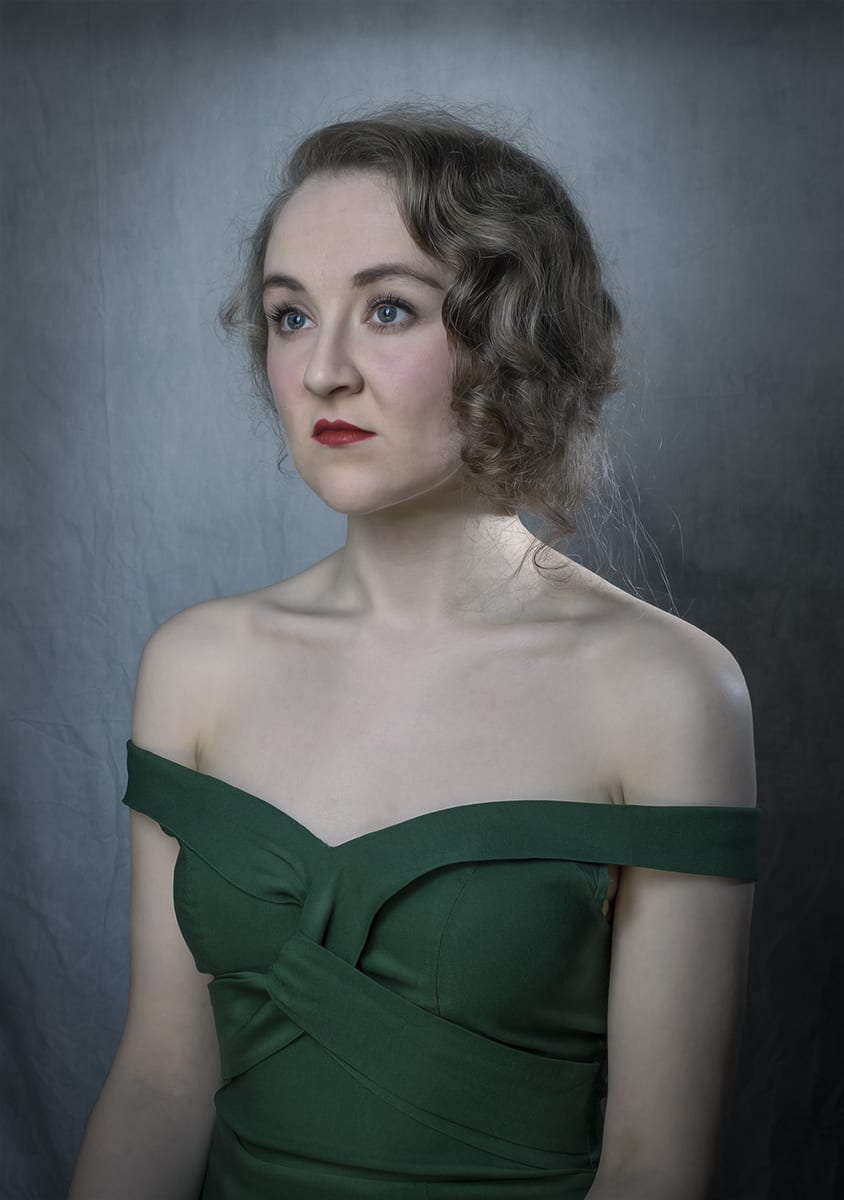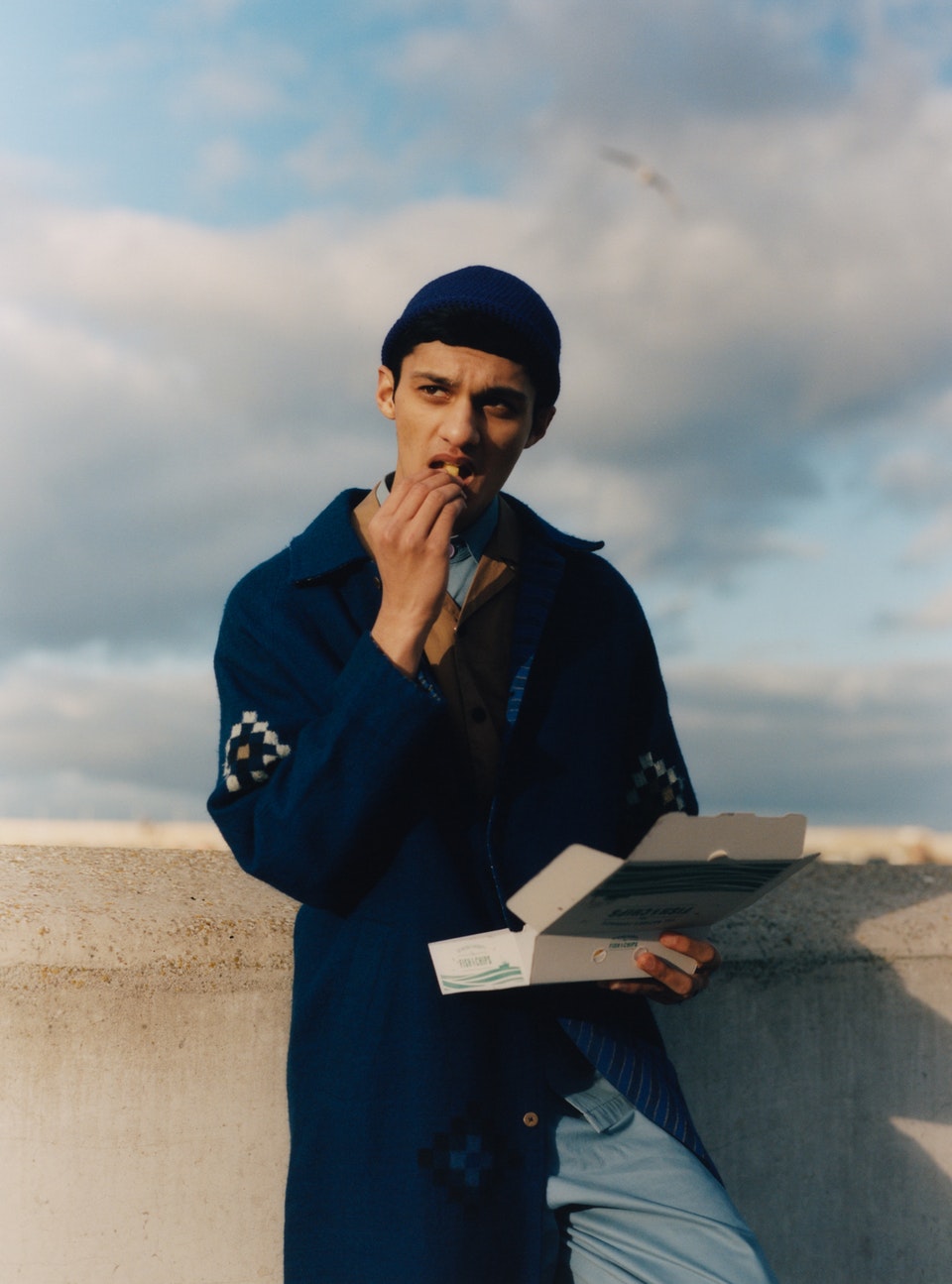Lucus Joyce’s weekly People’s Choice winning portrait is a haunting image of his friend Ashley, who lives with pernicious anemia. Inspired by the thousand yard stare, a term often used to describe the blank, unfocused gaze of soldiers who have become emotionally detached from the horrors around them, Joyce sought to use the portrait to depict the many aspects of Ashley’s life and identity. He is hoping to extend the image into a series focused solely on Ashley, using excerpts from her writing and photographs of her possessions.
Joyce’s venture into photography began when he was given his first camera at age 15. He since attended Edinburgh College of Art, where he received a degree in photography, and subsequently toured with musicians, shooting album artwork and producing music videos along the way. A few years ago, a chance shoot with Scottish author Ian Rankin inspired Joyce to pursue portrait photography, which is now the genre he specialises in.

Can you tell me about the portrait you entered into Portrait of Britain 2018? What is the story behind it?
The portrait I entered is of my friend Ashley. We’ve been friends for about 15 years, but I didn’t really know that much about her. One thing I knew about Ashley was that she lives with pernicious anemia, a deficiency of red blood cells. I was not aware of the condition before I met Ashley, and she was never moved to talk about it much, apart from when she explained that she’d had a bout of extreme tiredness, or when she proudly told me that pernicious anemia is sometimes known as the vampire disease. With this fact in mind, and given that Ashley lives in an apartment above a funeral parlour, the route I was going to take for my creative direction was clear.
Why did you select this image to enter into Portrait of Britain?
Often, photographers talk about capturing a moment, but with this portrait I wanted to capture a lifetime. As the model and I are friends, it means I didn’t need to do much investigating or truth stretching to get an idea of what I wanted to capture in the portrait. Repression, emptiness, fear, uncertainty and burden all make up the fabric of her life experience, but there is also hope, beauty and strength, which I hope viewers find reassuring.
Aesthetically speaking, I was trying to recreate the sense of a renaissance style painting. I wanted to give the portrait a timeless and almost ethereal feeling. Of the images captured during the shoot, I chose this one because I’m interested in the well-known thousand yard stare and this is an example of that. I like giving the viewer an unhindered chance to wonder what my subject is thinking about.

Is the portrait part of a wider series? If so, what were the aims for that series?
In an effort to get her to talk about her illness more, I suggested to Ashley that we did a combined project consisting of photographs and her written words. The rest of the photographs we’ll shoot will be of her possessions, which are often eclectic, and sometimes bizarre.
Why did you choose to enter Portrait of Britain?
A few months ago I had something of a eureka moment. I have been a practising photographer since an early age, but I have never found my comfort zone behind the lens. I heard a photographer on a podcast say that when you find yourself struggling for ideas, pick one idea, and just get good at it. Straight away I knew that I wanted to concentrate on portraiture. I have done portrait shoots for many years but not with the excitement and hunger that I do them now.
Even just by entering Portrait Of Britain, I felt like I was giving myself a boost and a small feeling of accomplishment, and that’s all any photographer really needs to keep going. Being chosen as one of the weekly Editor’s Picks was an unexpected but gratefully received bonus.

What do you think makes a compelling portrait?
I heard somewhere that when you meet a stranger, it takes the average person three seconds to decide how you feel about them. For me personally, that time is probably even less with portraits, so I am always looking for that instant hook. I like portraits to stop me turning the page or walking on to the next frame. The eyes are always so important, as that is where you are concentrated on in conversation, and I always think you should be able to feel like the subjects are almost willing to ask questions.
Do you have any advice for future entrants about selecting a portrait to submit and, more generally, about getting into portrait photography to begin with?
As I mentioned earlier, even just the small sense of achievement you get from applying is something you can use to push yourself on, and if needed, to validate your goals to yourself. To be in the company of amazing and accomplished photographers is a great honour.
When picking a portrait to submit, I would try to put yourself in the shoes of the viewer who is seeing it for the first time. Think about what can be read into your portrait, and what stories others can create from it.
Future generations will look to Portrait of Britain 2019 to see the face of the nation in a historic moment. What will it look like? Enter your work today!



